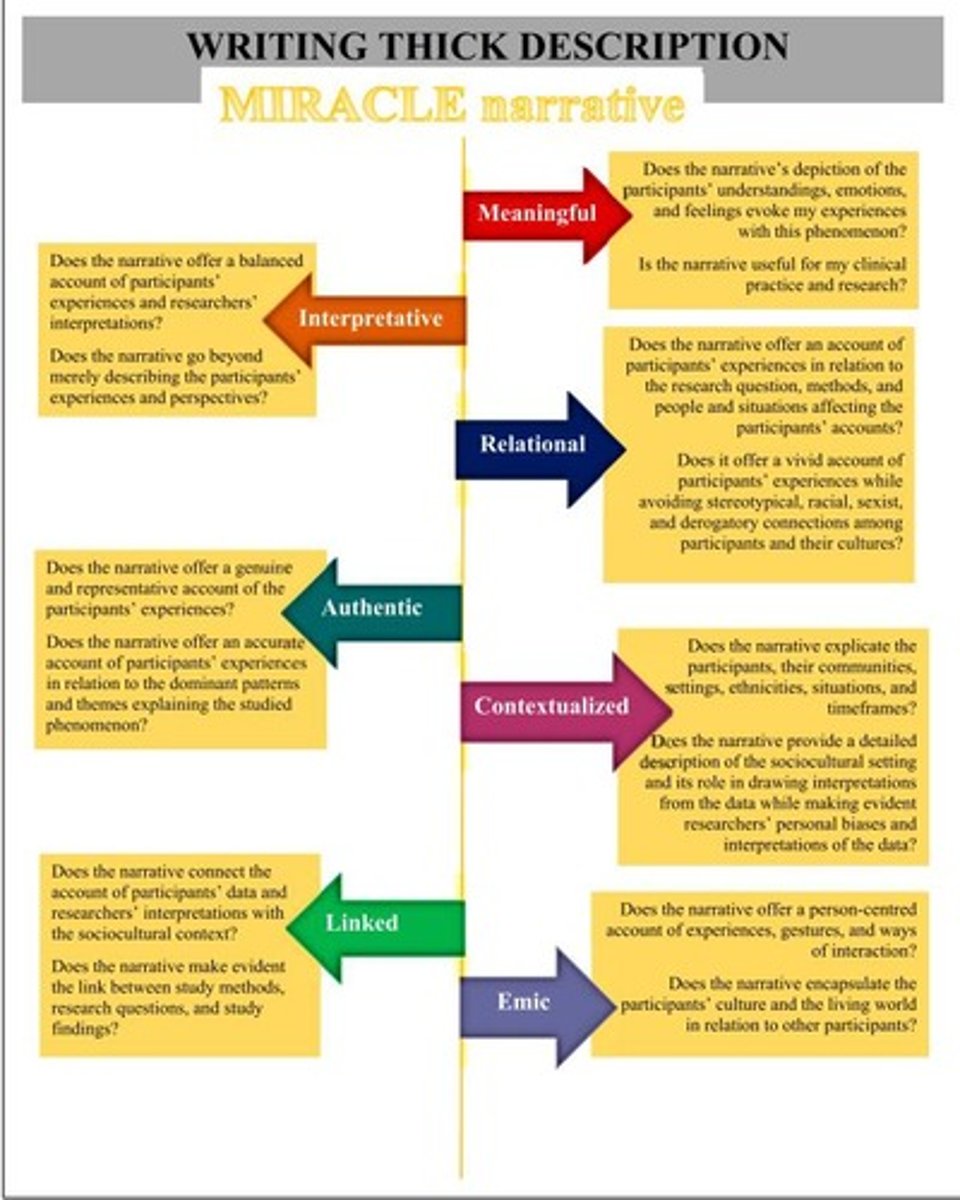Qualitative Data Analysis in Nursing Research
1/25
There's no tags or description
Looks like no tags are added yet.
Name | Mastery | Learn | Test | Matching | Spaced |
|---|
No study sessions yet.
26 Terms
What are the main activities involved in organizing and analyzing qualitative data?
Organizing and collapsing data, coding, and analyzing through various qualitative methods.
What types of qualitative studies are discussed in the context of data analysis?
Ethnographic, phenomenological, grounded theory, and qualitative descriptive studies.
What is a theme in qualitative research?
An abstract entity that brings meaning and identity to an experience, capturing its essence.
What is coding in qualitative analysis?
A method of organizing and analyzing data by sorting it into categories, often using a coding scheme.
What are the different levels of coding in qualitative analysis?
Level I (in vivo codes), Level II (broader categories), and Level III (theoretical codes).
What is phenomenology in qualitative research?
A focus on the lived experience and essence of an experience, often explored through in-depth conversations.
What does the term 'constant comparative analysis' refer to?
A method where content from one source is compared to all other sources to identify commonalities and differences.
What is the purpose of grounded theory in qualitative research?
To gain an understanding of a phenomenon and develop a theory of a basic social or socio-psychological process.
What is the significance of 'thick description' in qualitative research?
It provides a detailed account of the context and meaning of the data, enhancing the understanding of the findings.

What are the steps involved in van Manen's qualitative analysis?
Identifying themes, coding for themes, and developing a rich description of the meaning of experiences.
What is the role of trustworthiness in qualitative research?
To ensure the findings are credible, reliable, and meaningful, addressing issues of integrity and rigor.
What is the difference between manifest content and latent content in qualitative analysis?
Manifest content refers to what the text explicitly states, while latent content involves deeper interpretation and meaning.
What is the purpose of qualitative content analysis?
To identify themes and patterns within qualitative data by breaking it down into smaller units.
What is the importance of data management in qualitative research?
To protect participants' confidentiality and ensure ethical handling of sensitive information.
What questions should be considered when critiquing qualitative analysis?
Was the analysis process discussed? Who conducted it? What methods were used? Are findings meaningful?
What is the main focus of ethnographic research?
To describe and interpret the cultural or social dynamics of a specific group through fieldwork and observation.
How does qualitative analysis differ from quantitative analysis?
Qualitative analysis is exploratory and focuses on understanding experiences, while quantitative analysis seeks to measure and quantify data.
What is the significance of coding for themes in qualitative research?
It helps to identify and organize the main ideas and patterns that emerge from the data.
What does the term 'gerund' refer to in the context of themes?
A noun form of a verb ending in 'ing', often used to name themes in qualitative research.
What are the implications of qualitative research findings?
They can impact practice, research, theory, policy, and education.
What is the role of participant observation in ethnographic research?
It allows researchers to gather firsthand insights into the behaviors and interactions of the group being studied.
What is the outcome of using a coding scheme in qualitative analysis?
It organizes data into manageable segments, facilitating the identification of patterns and themes.
What is the purpose of using software packages like INVIVO or MAXQDA in qualitative research?
To assist in organizing and analyzing large volumes of qualitative data effectively.
What does 'data de-identification' mean in qualitative research?
The process of removing identifiable information from data to protect participant confidentiality.
What is the significance of using quotations in qualitative analysis?
They substantiate categories or themes, providing evidence for the findings.
What is the role of clarity and organization in presenting qualitative research findings?
To ensure that the report is understandable and effectively communicates the research outcomes.